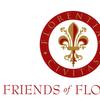Featured 19th Century Painter: Abbot Fuller Graves (American, 1859-1936)
- February 05, 2021 09:38
Artist Abbot Fuller Graves was born in Weymouth, Massachusetts and had originally studied to become an architect. However, a latent interest in floral still-life painting prompted him to travel to Paris, France 1884 for art study, where he roomed with another Boston artist, Edmund Charles Tarbell. In 1886, with his financial success as an artist assured, he married and his friends Childe Hassam and Edmund Tarbell served as his ushers. In 1887 Graves made a second trip to Paris, this time studying figure painting at the Academie Julien. In the interval between the two trips, he was employed at Cowles Art School in Boston, Massachusetts, where his friend Childe Hassam was also on staff. After he returned from Europe in 1891, Graves opened an art school in Boston, which he later moved to Kennebunkport, Maine. Abbot Fuller Graves is best known for his bright impasto-textured floral still-lifes done in the Impressionist style; however, his genre scenes, many executed in a more traditional academic style, are also highly sought after. Graves was an Associate of the National Academy (1926) and a member of the Salmagundi Club (1909), American Art Association of Paris; Allied Artists of America; North Shore Arts Association (MA), Copley Society of Boston; National Arts Club (Life Member); Boston Society of Water Color Painters; Boston Art Students Association; Connecticut Academy of Fine Arts; Boston Art Club and the Artists' Fund. His awards include Massachusetts Charitable Mechanics Association (1887, 1892) Exposition des Beaux Arts, Paris (1905); Salmagundi Club (1933). His solo exhibitions included Leonard and Company (1899); Copley Gallery (1917); Brockton Public Library, Brockton, MA (1926); Babcock Galleries, NYC (1927), Vose Galleries of Boston (1924, 1925, 1929, 1932) and Brick Store Museum, Kennebunk, ME (1979).





















